Chevelle Restoration - Part 3
Well, we've got all the parts for the small block chevy engine, so hopefully that part of this project should continue smoothly for the next couple weeks. Look at all those shiny parts!
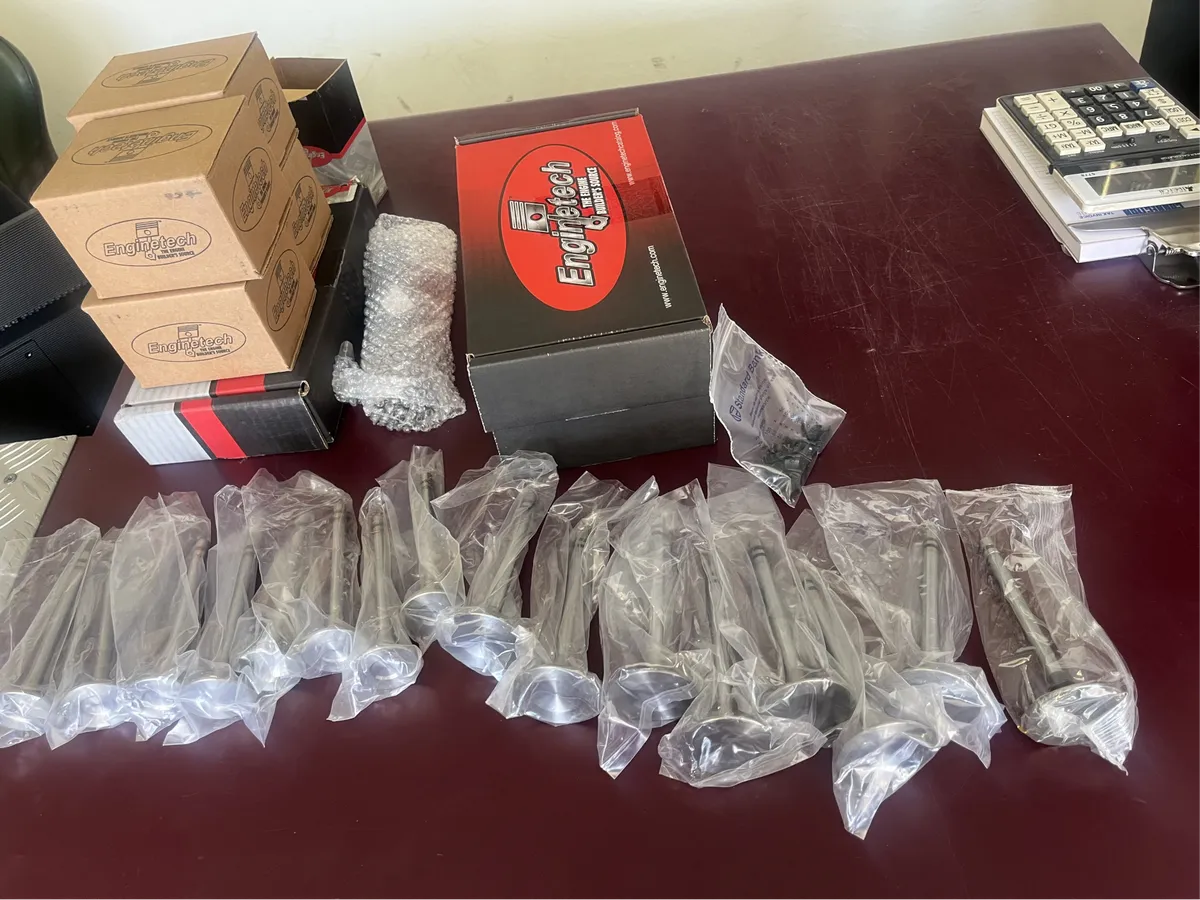
V8s sure do have a lot of pieces inside of them!

However, there seems to be some concern about the valve spring retainers I bought after braving the South of Joburg and driving all the way to Alberton. I may have gotten retainers that don't fit and are in fact for Ford V8s.
I've neglected to mention the whole hassle these goddam retainers have been as it's been a major thorn in my side. The issue is that retainers are not really a part that is ever worn out. Obviously, any V8 part outfit here in South Africa doesn't have them immediately on hand as they're not really a moving product. The cursed items:
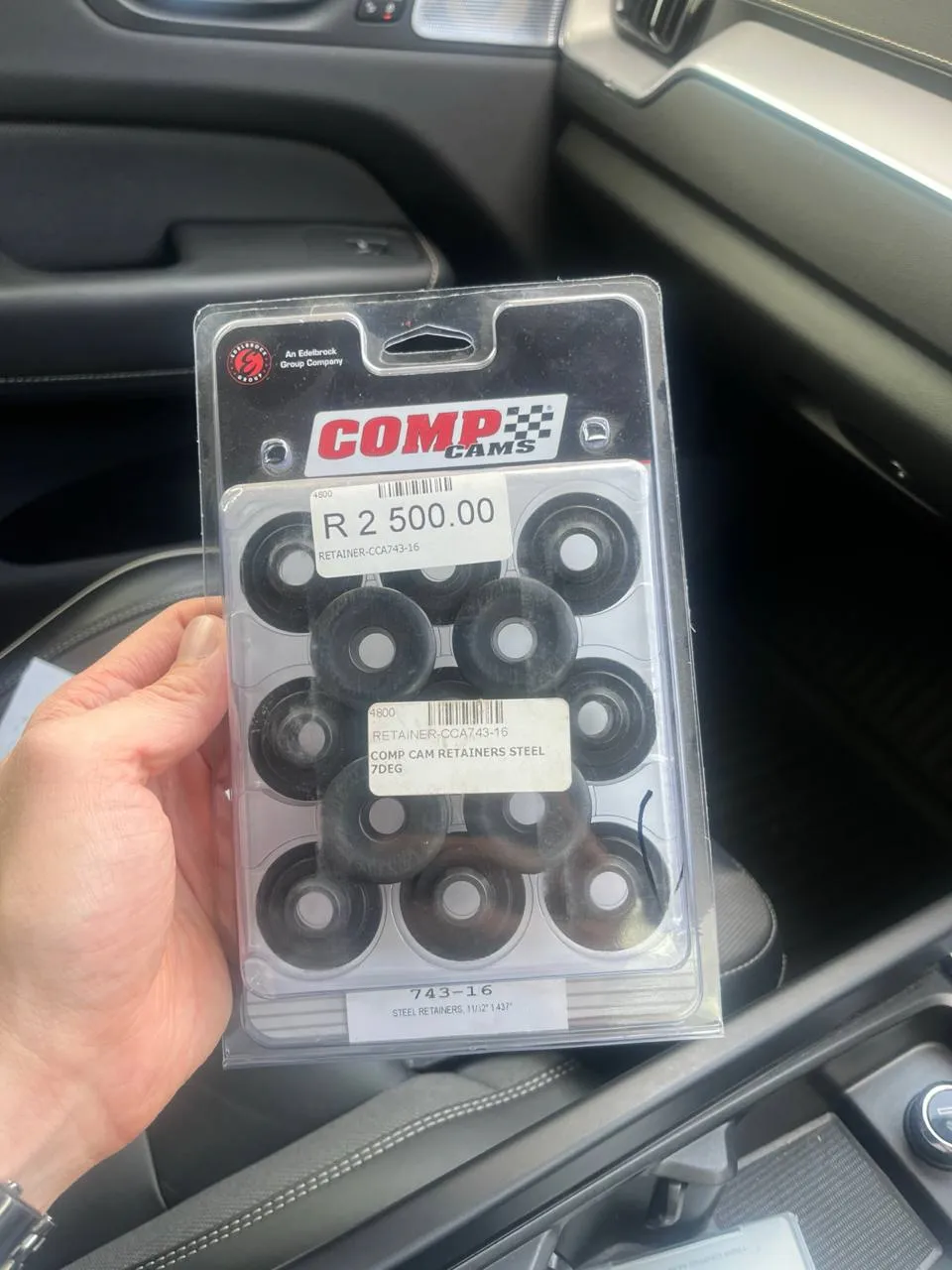
Nonetheless, there may be a little more sourcing of parts upon my return from Dublin, as clearly the valve spring retainers I sourced fit more snugly on the Ford valve springs (middle).
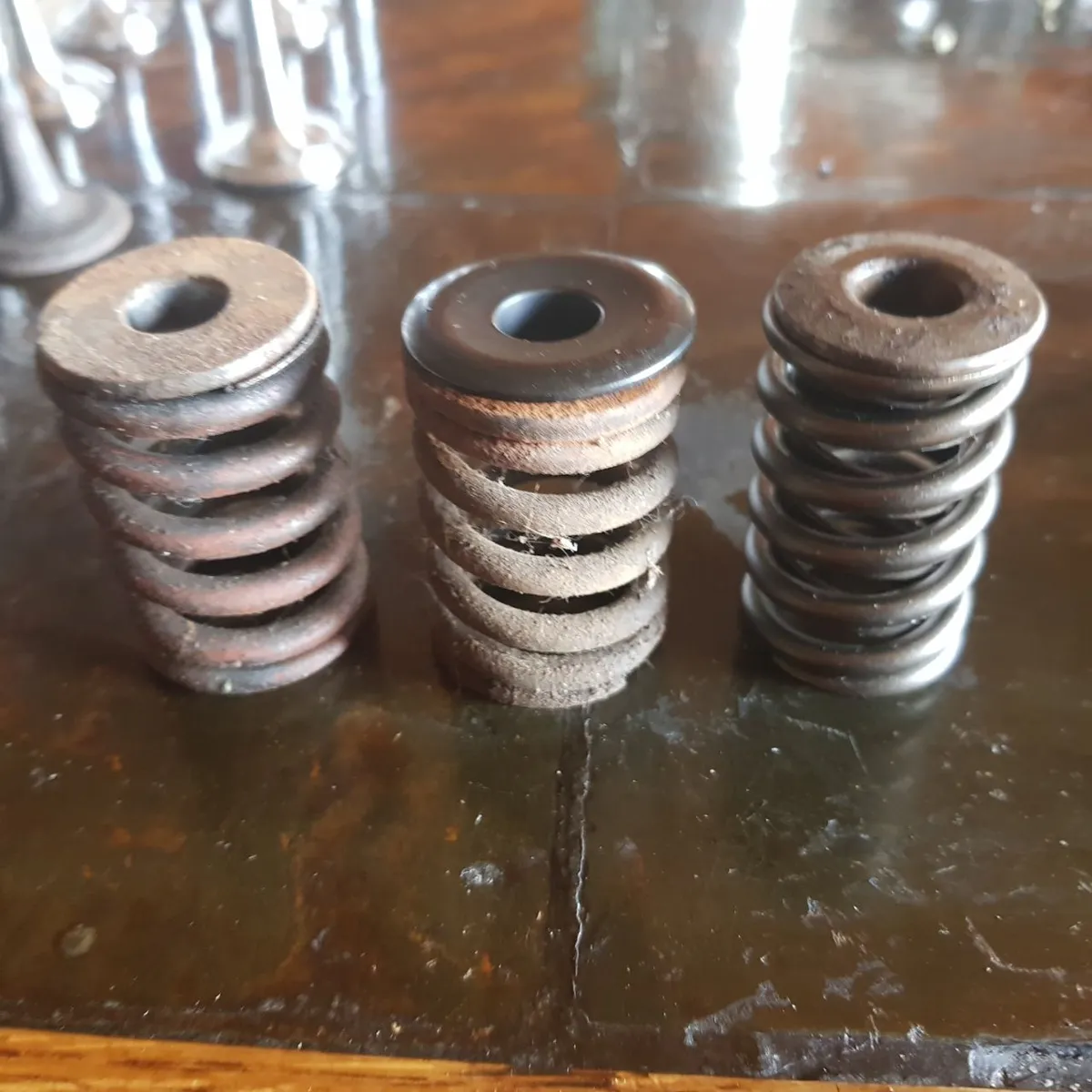
Before I move onto the next cursed item, being the rear drum brakes, I decided to give the engine bay a little bit of a tidying up before the (hopefully soon!) insertion of the prodigal 307:
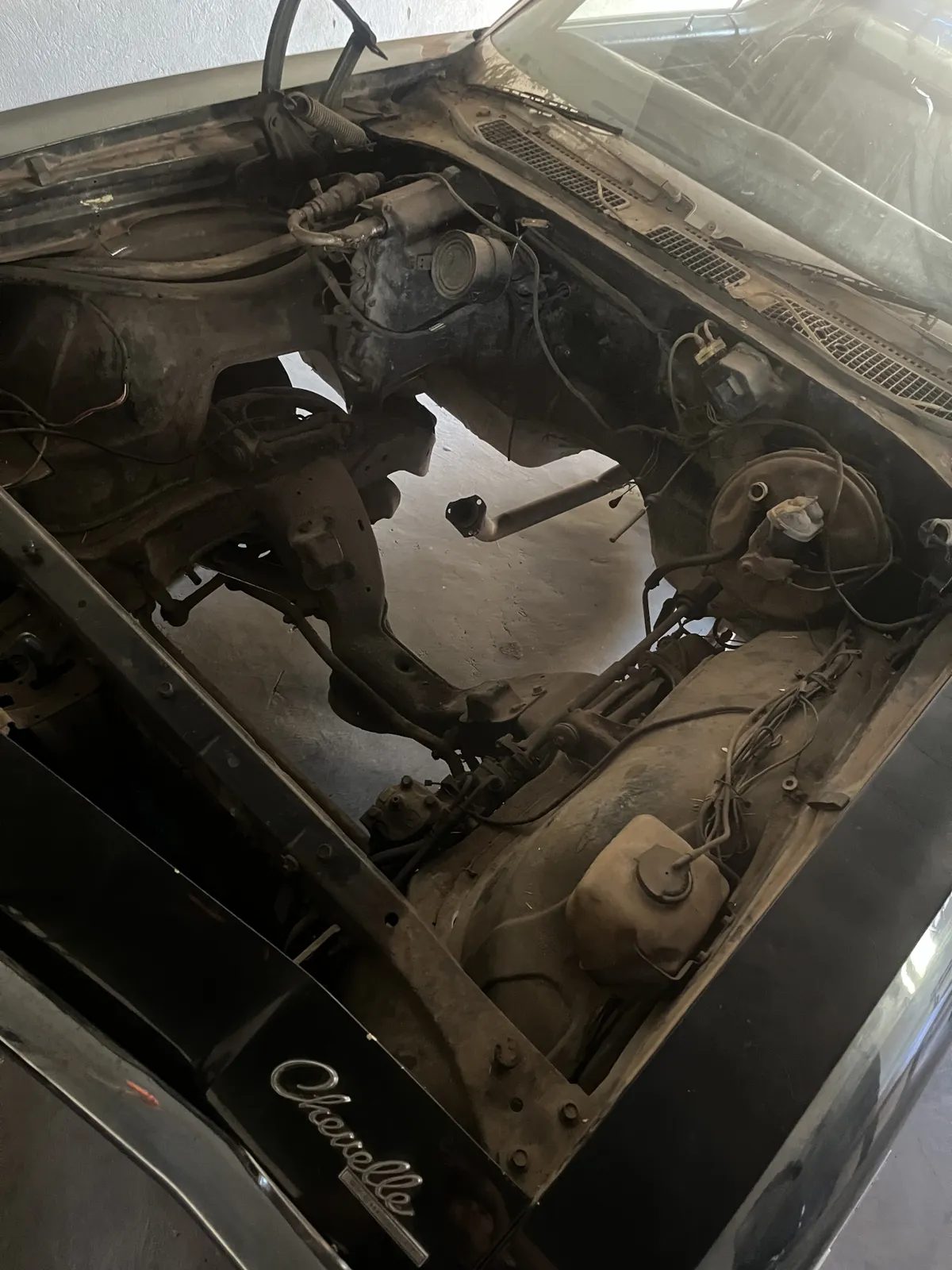
It still seems equally grimey after putting what I felt was sufficient back into the scrubbing process, but may indeed need a little more wire brushing before I attack it with the satin black spray paint.
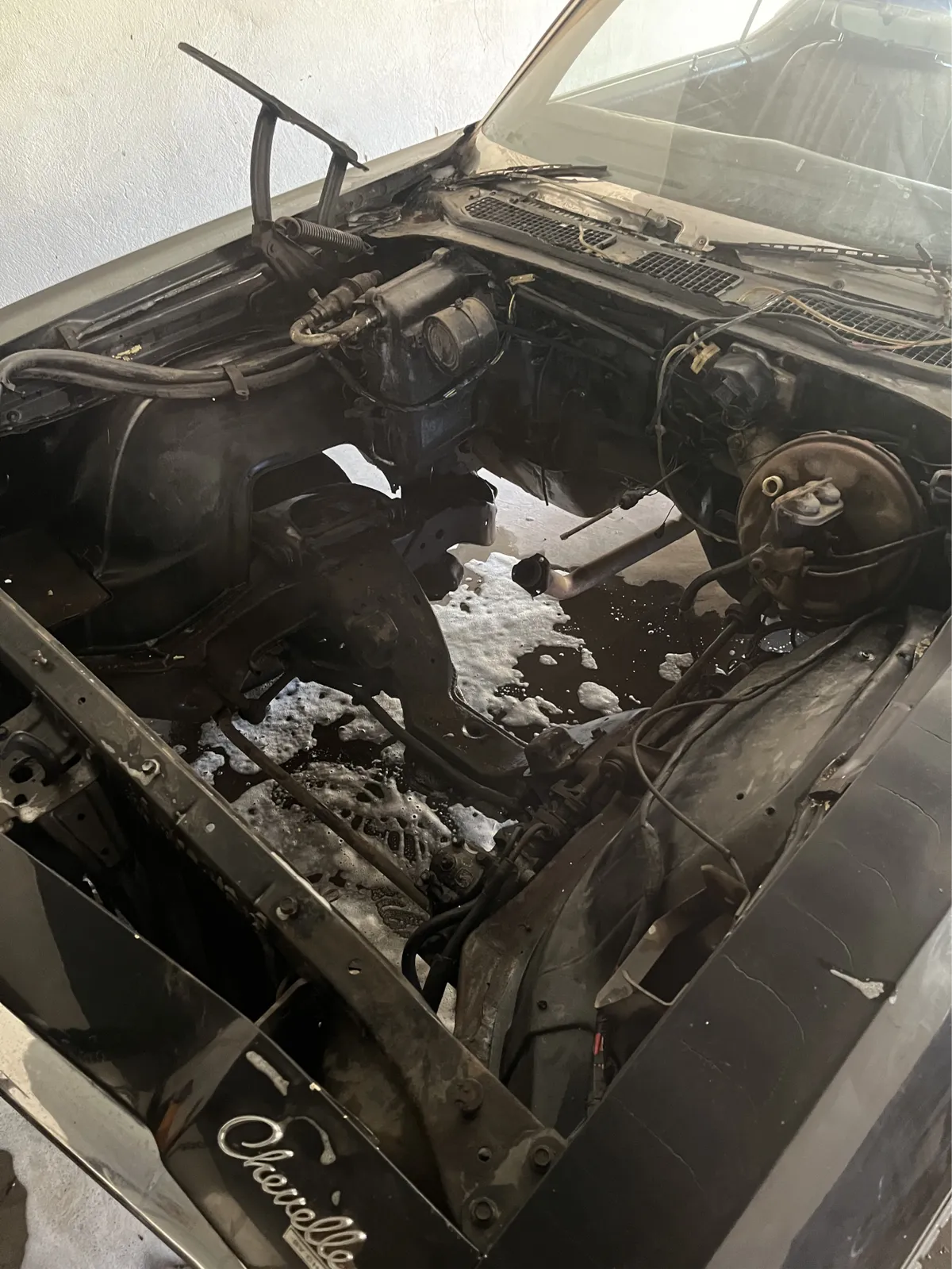
Great, more hard labour.
Ladies and gentlemen, on to your entertainment for tonight, the topic of late twentieth century drum brakes! The saner among us did their research to ascertain exactly what makes these particular drum brakes tick before we pull out the angle grinder and/or sledgehammer.
Again, rational and patient individuals will have found that these brakes are self-adjusting, and maybe, just maybe, someone had engaged the handbrake to level 9000 shortly after this car was parked over twenty years ago. And maybe, just maybe, the post-WWII innovative and pioneering Americans who designed these drum brakes thought to enable the un-self-adjusting of these brakes from the outside, should the brake shoes become so extended to the brake drum to prevent their rotation and removal.

After sufficient time crawling about and craning my neck to study the backing plate of the drum brakes, it became clear that the hole through which to access the adjusting nut is on the front of the drum brake on this particular model of Chevelle, and through satan's graces, is not in line with the adjusting nut, nor can the drum rotate due to the very reason we're trying to access this nut. So after spraying copious amounts of brake cleaner through said hole, I decided to introduce my friend, Sir Isaac Newton:
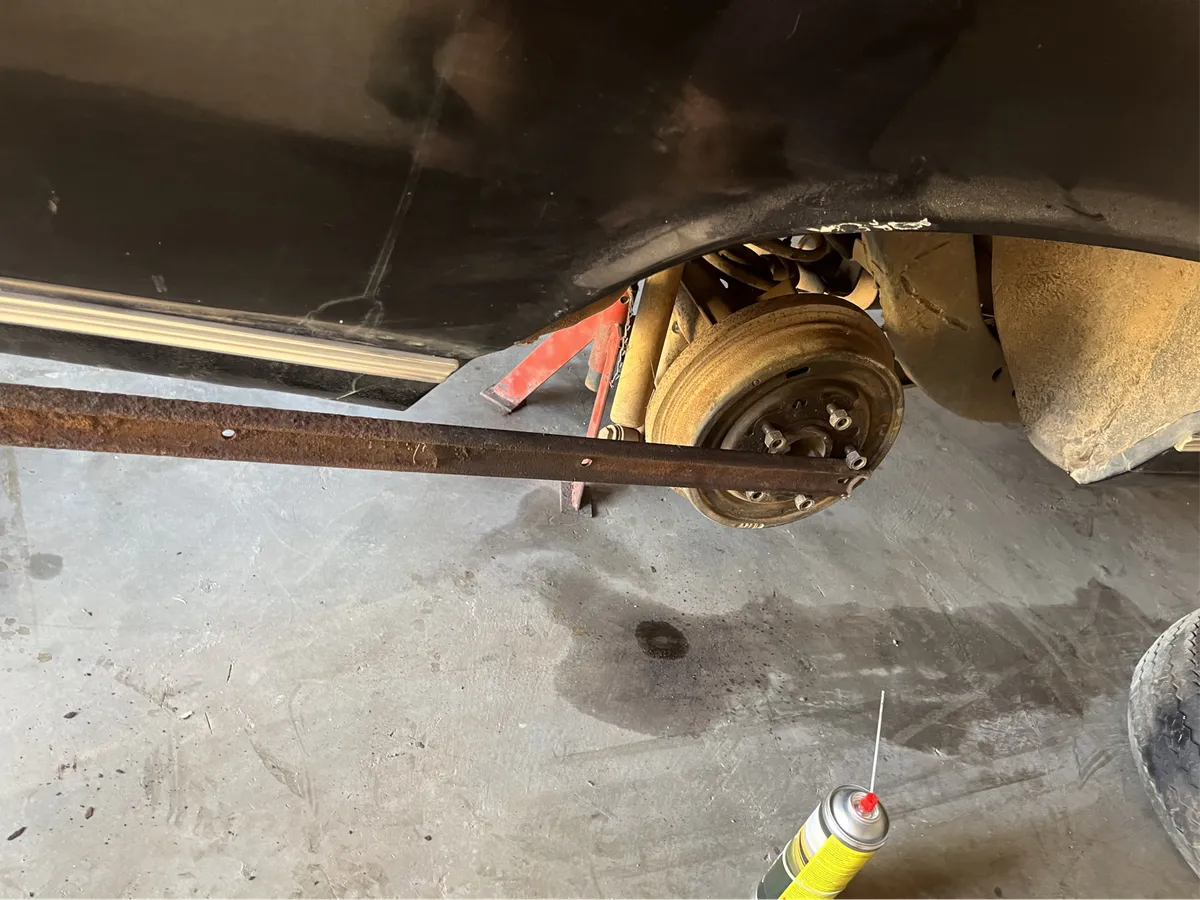
Isaac Newton of course being my pet name of my hefty steel fence post, and true to his namesake, and a fulcrum on which to place him, I have moved the world. "The world" of course being my pet name for the hole on a 1969 Chevrolet Chevelle Malibu rear brake drum through which the adjusting nut of the brake shoes can be accessed:
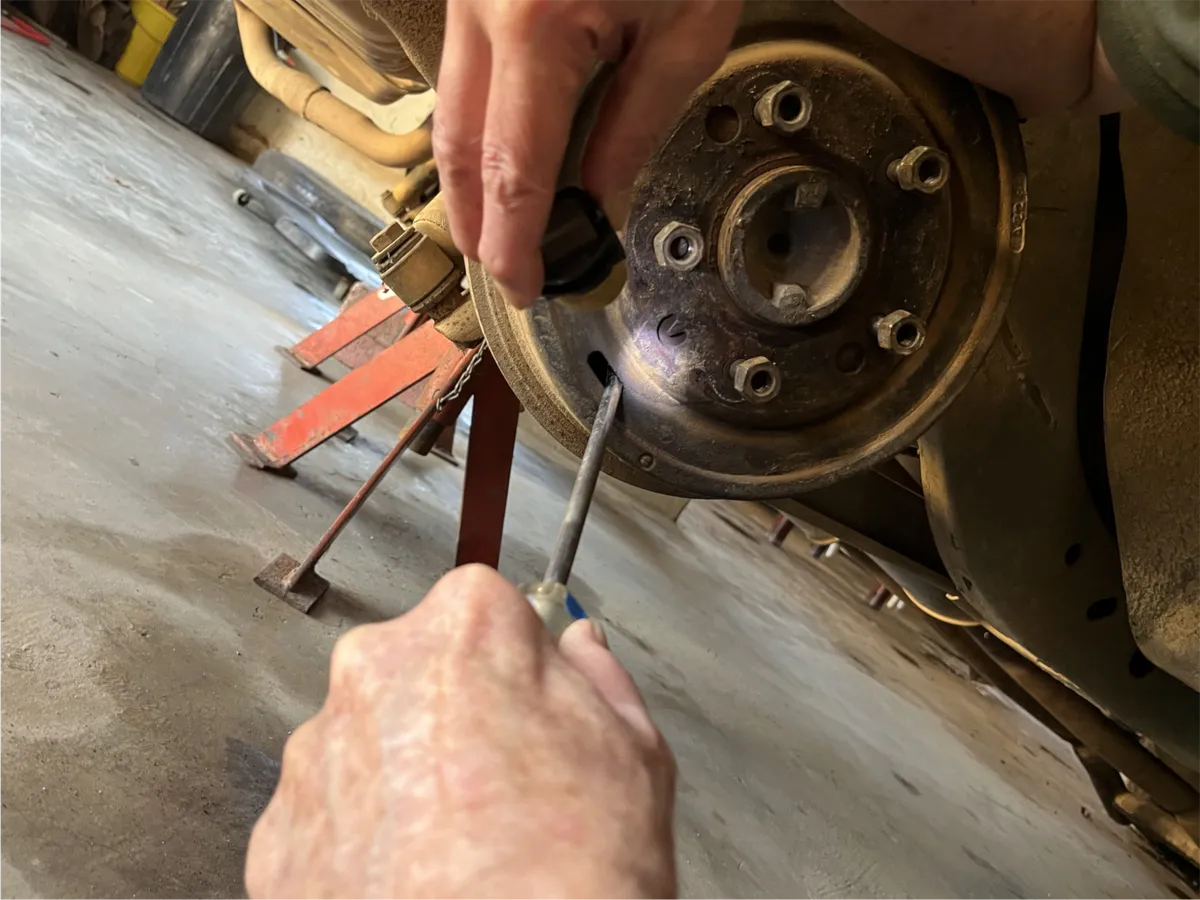
And like magic, the passenger-side rear brake drum slid off as a reminder to all power tool touting and sledgehammer wielding vandals to always RTFM.
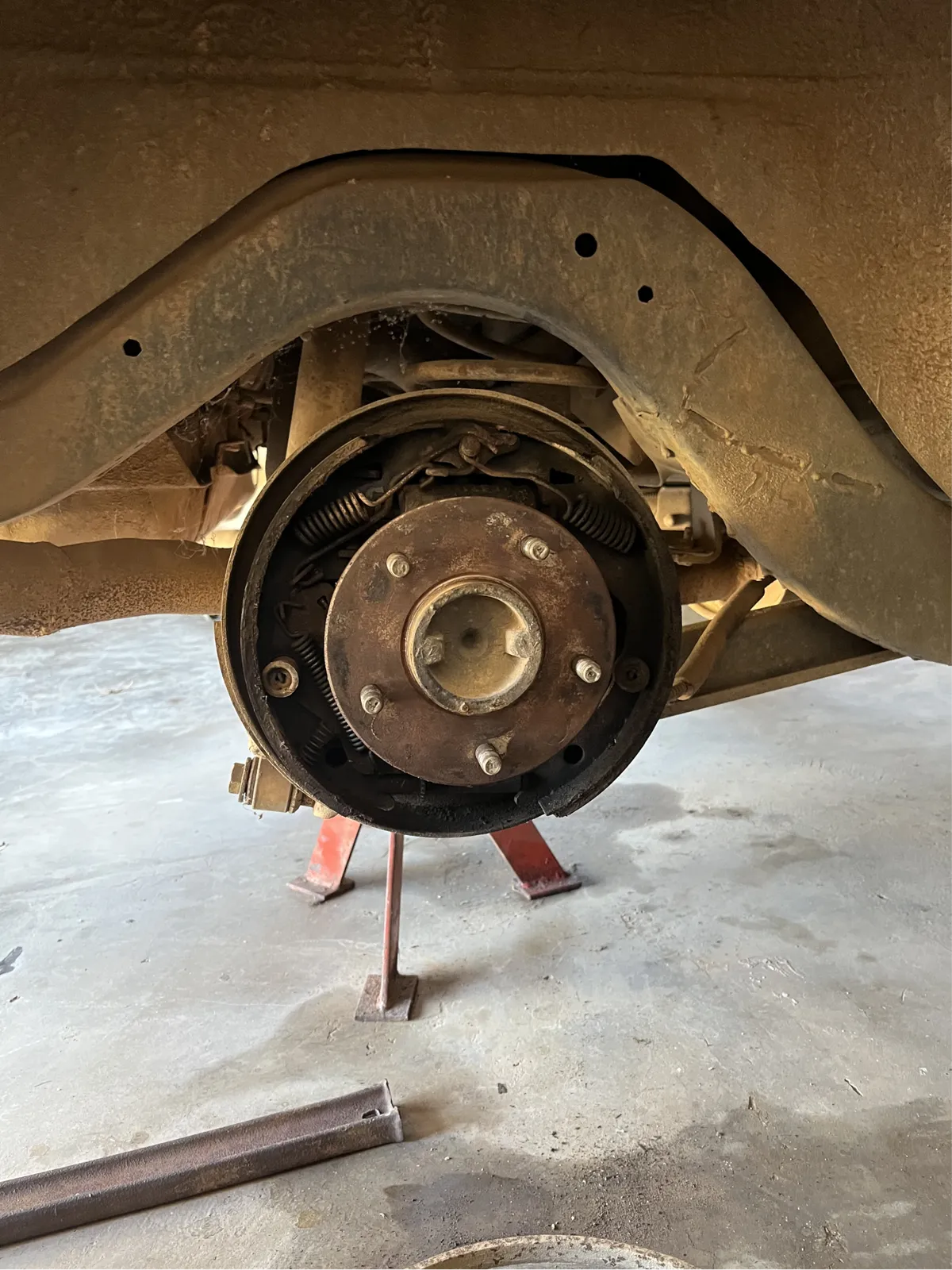
The driver-side rear drum needed a little more encouragement and a little more leverage, and once it finally gave way, the dreaded sound of a loose part falling to the ground could be heard and the equally dreaded sensation of not knowing from whence the part came was deeply felt.

And so began the arduous process of disassembling the entire brake drum with all its finicky springs and levers tensioned to insane levels only to reassemble the entire apparatus and glance down to see yet another obscure item that lives among the mysterious workings of drum brakes. Repeat ad nauseam.
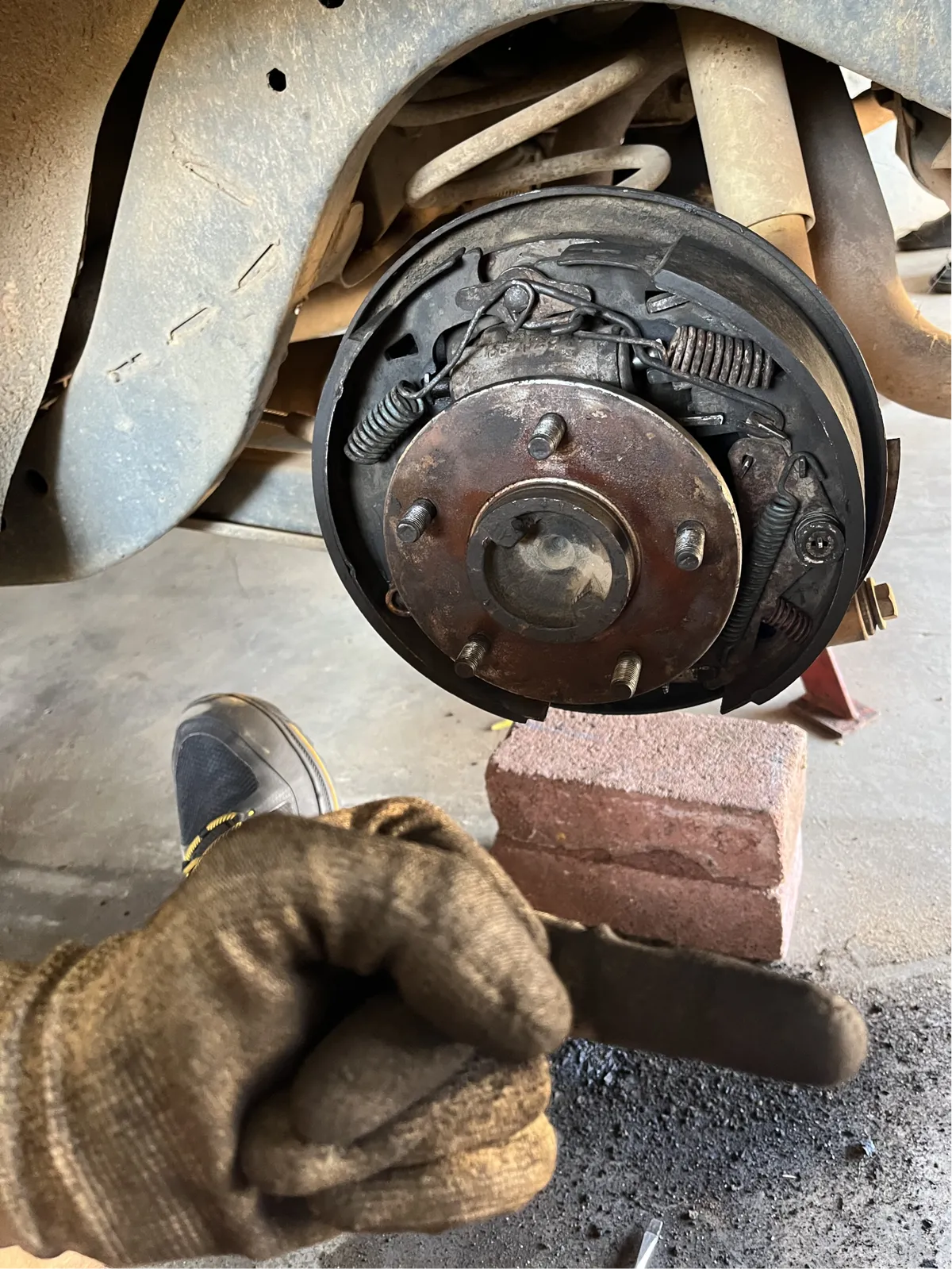
I think I disassembled and reassembled this particular drum brake four times over the course of the afternoon, with the requisite finger squashing, spring twanging, lever tensioning and three-hand-needing that seems to accompany this enterprise. Suffice it to say, I have become grease monkey, disassembler of brake drum:

Hopefully in the next post will show us putting the engine back in the car, with a special guest!